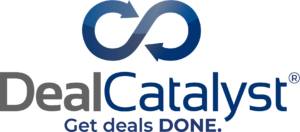January 17, 2025 - On Tuesday, January 14th, the LSTA kicked off its 2025 webinar program with the webinar “Private Credit: Looking at the Year Ahead.” The webinar featured insights from Bill Cox, Head of Corporate, Financial and Government Ratings at KBRA and Kelly Thompson, Founder and Editor of KBRA DLD. Below we highlight the key takeaways from the discussion. (Click here for the replay and presentation, which includes KBRA’s 2025 Outlook report.)
How big is the direct lending market? KBRA DLD estimates the market at $1.4 trillion. KBRA DLD’s universe covers cash-flow direct lending loans to sponsored borrowers. It does not include strategies such as junior/mezz, distressed or venture, or non-corporate private credit including infrastructure and real estate. It includes direct lending funds AUM (dry powder and deployed capital of senior debt and unitranche vehicles) of about $500B through March 2024 (sourced to Preqin), an assumed $250B of leverage in these funds (equivalent to a .5x multiple), senior investments of BDCs of about $320B including leverage, private credit CLOs (PCLOs) representing about $170B and unknowns (other leverage, separately managed accounts and sovereign wealth funds). By comparison, Preqin pegs the market at about $1.7 trillion, including all corporate credit strategies other than venture but not including BDCs, leverage, PCLOs or unknowns.
Is more growth expected in 2025 and where is it coming from? KBRA is expecting continued growth in private credit in 2025 despite challenges from capital raising outstripping deployment opportunities amid a lack of sponsored company exits that has slowed down loan growth. Notwithstanding this dynamic, KBRA noted, there has been no slowdown in fundraising. Insurance companies’ participation in private credit is still nascent and the tie ups between private credit platforms and insurers will continue to expand. Growth will also be supported by expansion into retail strategies, mainly catering to high net-worth individuals through RIAs in perpetual BDCs and interval funds wrappers.
What’s the forecast for direct lending loan volume in 2025? While new lending volume in KLD DLD’s private data set more than doubled in 2024 to $300B from $146B in 2023, the strength of the syndicated market and the uncertainty around the timing and scale of LBO volume leaves a question mark around the direct lending market’s ability to achieve similar growth this year. Refinancings, which were a big contributor to 2024’s proceeds mix, will likely continue as borrowers that placed direct lending loans in the last few years look to take advantage of lower rates and lower spreads, which KRBA DLD noted have come down across all deal sizes. (Specifically, according to KBRA DLD, lower middle market loan spreads are down 80bps over last two years and upper middle market/large cap loan spreads are down 131bps over the same period). Moreover, borrowers will want to start addressing maturities. The bulk of loans tracked by KBRA and KBRA DLD start maturing in 2026 and peak in 2028. Dividend recap volume, which jumped in 2024 due to limited M&A activity, is likely to remain elevated in 2025 as lenders grow increasingly amenable to opportunistic transactions absent new supply.
What can we expect in terms of industry dispersion in portfolios? KBRA noted that its portfolio of almost 2,000 unique names is representative of the typical large, diversified lender and the top three portfolio sectors remain commercial and professional services (23%), followed by software (20%) and healthcare services and technology (15%). However, the healthcare sector has been struggling relative to other sectors as certain roll up strategies face scaling and regulatory headwinds. Still, it is a significant source of new loans. KBRA also pointed out that software companies are the strongest performers in its portfolio, with 40% of those borrowers increasing interest coverage despite higher interest cost.
Will BSL deals continue to migrate to the direct lending market? The broadly syndicated market continues to be accessible, with banks becoming more aggressive on pricing, incentivizing borrowers in the direct lending market to migrate BSL. However, periods of volatility (perhaps on the back of new policies under the Trump administration) are likely to provide opportunities for direct lenders to win back deals. Some direct lenders will take advantage of the limited single-B appetite in the BSL market. For jumbo loans ($1B or more), which account for roughly 20% the direct lending market (as defined by KBRA DLD) and are often dual-tracked, competitive terms will be important for direct lenders. Terms nonbanks can provide borrowers that aren’t suitable for the BSL market include PIK optionality, delayed draw term loans and equity (e.g. preferred, common, warrants).
What does the increase in PIK mean for credit risk? KBRA noted that it hasn’t seen PIK introduced to a company that’s not performing well in relation to its business plan and that PIK is proving to be good for credit in the short run. (Strong companies may not have survived shocks like COVID and a string of interest rate hikes had it not been for PIK.) KBRA also suggested that because interest rates are projected to be 100bps higher this year than people were thinking three months ago, some companies that may not have gotten concessions such as new PIK features will run out of time, and if sponsors aren’t willing to invest, there will be higher incidence of defaults.
Whither direct lending defaults? KBRA DLD is forecasting a 3% default rate for direct lending loans in 2025, up 25bps from the 2024 forecast (and relative to 1.9% tailing 12-month default rate as of November, which DLD expects will increase to the 2.75% area (the 2024 forecast) after BDCs’ 4Q24 results are reflected). For sponsored companies, KBRA DLD is forecasting 2.75% for 2025, compared to 2.5% for 2024. For non-sponsored companies, its 2025 forecast is 3.75%, down from 4.25% for 2024, as some defaults it expected in 2025 occurred in 2024. DLD defines a default as a bankruptcy filing, missed payment, distressed debt exchange or restructuring, or distressed exit.






